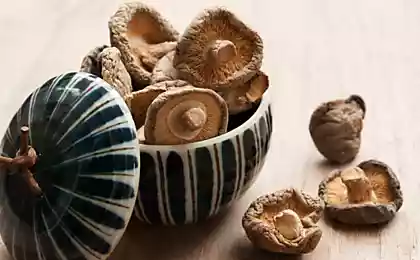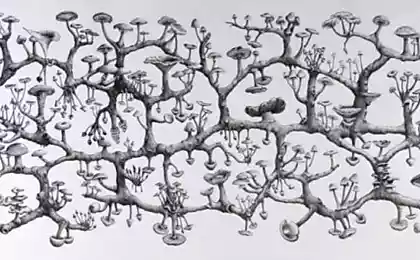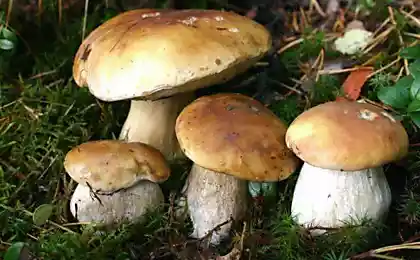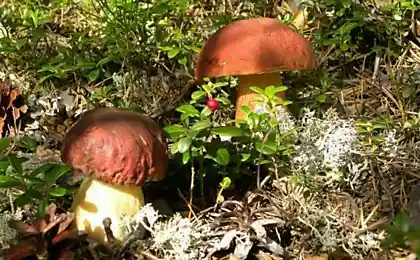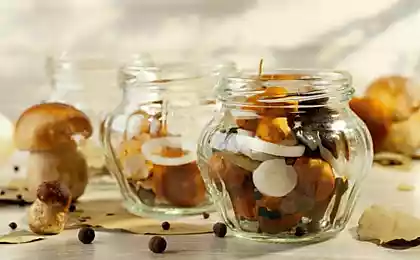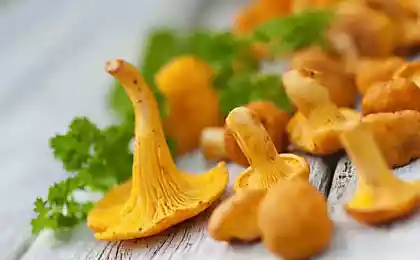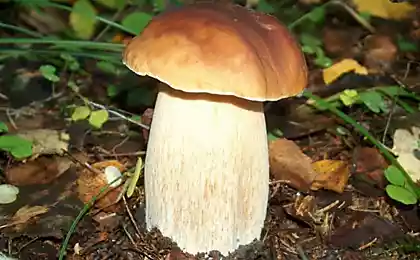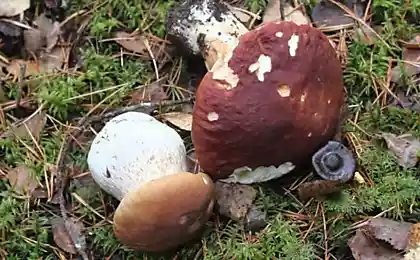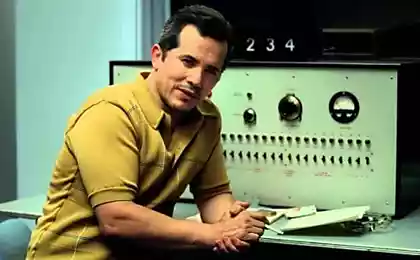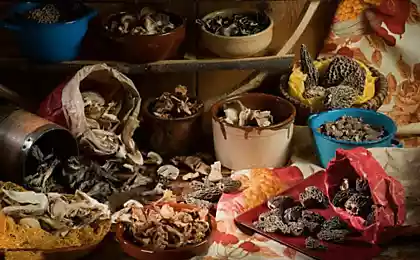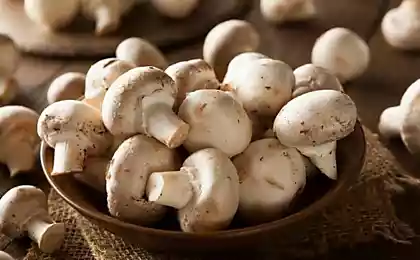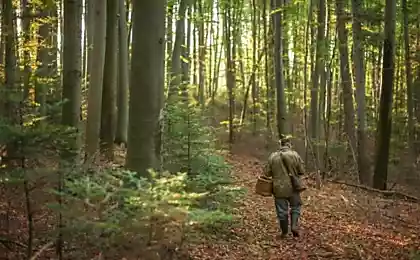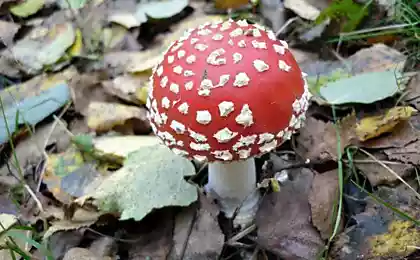299
Mushrooms - what we really know about this form of life
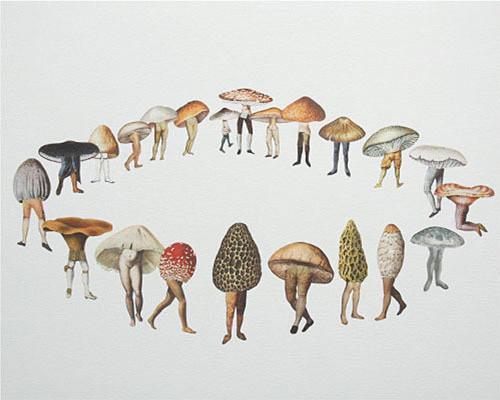
In 2000, Professor Toshiyuki Nakagaki, a biologist and physicist at Japan’s Hokkaido University, took a sample of a yellow mold mushroom and placed it at the entrance to a maze that is used to test the intelligence and memory of mice. At the other end of the maze, he placed a sugar cube.
Physarum polycephalum smelled sugar and began sending its sprouts in search of it. The spiders of the fungus split at each intersection of the maze, and those that got stuck turned around and began to look in other directions. Within hours, mushroom webs filled the passageways of the maze, and by the end of the day, one had found its way to sugar.
Toshiyuki and his team then took a piece of a fungus spider web from the first experiment and placed it at the entrance of a copy of the same labyrinth, also with a sugar cube at the other end. What happened shocked everyone. In the first instant, the web branched into two: one process made its way to the sugar, without a single unnecessary turn, the other climbed up the wall of the maze and crossed it directly, on the ceiling, directly to the target. Mushroom web not only remembered the road, but also changed the rules of the game.
I dared to resist the tendency to treat these creatures as plants. When you’ve been researching mushrooms for a few years, you start to notice two things. First, mushrooms are closer to the animal kingdom than it seems. Secondly, their actions sometimes seem to be the result of a conscious decision. I thought that mushrooms should be given the opportunity to try to solve mysteries. Toshiyuki Nakagaki
Further research by Toshiyuki found that mushrooms can plan transport routes just as well and much faster than professional engineers. Toshiyuki took a map of Japan and placed pieces of food in places corresponding to the country's major cities. He put the mushrooms "on Tokyo." After 23 hours, they built a linear web of webs to all the pieces of food. The result is an almost exact copy of the railway network around Tokyo.
It is not so difficult to connect a few dozen points, but to connect them effectively and most economically - it is not at all easy. I believe that our research will not only help us understand how to improve infrastructure, but also how to build more efficient information networks. Toshiyuki Nakagaki
The puzzle of another being
According to conservative estimates, there are about 160,000 strains of fungi on Earth, most of which have impressive abilities.
For example, in Chernobyl, a mushroom was found that feeds on radioactive products and, at the same time, cleanses the air around it. This mushroom was found on the wall of the destroyed nuclear power plant, which for many years after the disaster continued to produce radiation that destroys all life within a radius of several kilometers.
Exploring the Amazon forest, two biology students at Yale University found a fungus called Pestalotiopsis microspora that can decompose plastic. This ability was discovered when the fungus ate the petri dish in which it was grown.
So far, neither our science nor our technology can do that. Plastic pollution is one of the biggest technological challenges. Today, we have high hopes for this fungus. Professor Scott A. Stroble
Geneticists from the American Institute of Bioenergy managed to achieve that the strain of fungi quickly digested natural sugar - xylose. The potential significance of this discovery is to create a new, cheap and fast way to produce clean biofuels.
It would seem that the “primitive” organism, which has no brain and limited movement, works miracles beyond the control of science.
To try to understand the world of the mushroom, one must first explain something. Shiitake, Portobello and Champignon are not just the names of edible mushrooms. Each of them is a living organism, representing a network of millions of tiny webs under the ground. Peeking out of the ground mushrooms are only the “fingertips” of these webs, the “tools” with which the body spreads its seeds. Each finger contains thousands of spores. They're carried by the wind and the animals. When spores hit the ground, they create new networks and sprout new fungi.
This creature breathes oxygen. It is so unusual from a biological point of view that it belongs to its own kingdom, separated from both animals and plants.
But what do we really know about this form of life?
We do not know what causes an underground system of spiders to release mushrooms to the surface of the earth at a certain point; why one mushroom grows towards one tree and another towards another; and why some produce deadly poisons while others are tasty, healthy and fragrant. In some cases, we cannot even predict the timeline of their development. Mushrooms can appear three years or 30 years after their spores have found a suitable tree. In other words, we don’t know even the most basic things about mushrooms. Michael Pollan, researcher
Queens of the Dead
It is difficult for us to understand mushrooms because of their anatomical structure. When you hold a tomato in your hand, you hold the whole tomato as it is. But you can't pick a mushroom and examine its structure. The mushroom is just the fruit of a large and complex organism. The web of spiders is too thin to be cleaned of the ground without damaging it. Sgula Motzpi, microbiologist
Another problem is that most forest fungi cannot be domesticated and are very difficult to grow, both for research and industrial purposes.
They choose only a certain litter, they decide when to sprout. Often, their choice falls on old trees that cannot be moved elsewhere. And even if we plant hundreds of suitable trees in the forest and spray billions of spores on the ground, there is no guarantee of getting mushrooms at an acceptable time. Michael Pollan, researcher
The systems of nutrition, growth, reproduction and energy production in fungi are completely different than in animals. They don’t have chlorophyll, so unlike plants, they don’t use the sun’s energy directly. Champignons, shiitake and portobello, for example, grow on a litter of wilted plants.
Like animals, mushrooms digest food but, unlike them, digest food outside their bodies: fungi secrete enzymes that break down organic matter into its constituents and then absorb these molecules.
If the soil is the stomach of the globe, then mushrooms are its digestive juices. Without their ability to decompose and recycle organic matter, the earth would long ago have suffocated. Dead matter would accumulate endlessly, the carbon cycle would be interrupted, and all life would be left without food.
Our research focuses on life and growth, but death and decay are just as important in nature. Mushrooms are the undisputed rulers of the kingdom of death. That’s why there are so many in cemeteries. But the biggest mystery is the huge energy of mushrooms. There are mushrooms that can crack asphalt, glow in the dark, recycle a whole bunch of petrochemical waste overnight and turn it into an edible and nutritious product. The mushroom Coprinopsis atramentaria is able to grow a fruit body in a few hours and then, in one day, turn into a pool of black ink. Hallucinogenic mushrooms change people’s minds. There are poisonous mushrooms that can kill an elephant. And the paradox is that they all contain a tiny number of calories, with which researchers typically measure energy. Our way of measuring energy doesn’t seem to work here. Calories characterize solar energy stored in plants. But mushrooms are loosely related to the sun. They germinate at night and wither during the day. Their energy is something completely different.
Michael Pollan, researcher
Underground Internet
Mushroom is a complex infrastructure on which all plants in the world are located. In ten cubic centimeters of soil, you can find eight kilometers of its webs. The human foot covers about half a million kilometers of closely spaced webs. - Paul Stemetz, mycologist
What's going on in these webs?
In the early 1990s, the idea first emerged that the web of these webs not only conveys power and chemicals, but is also a smart and self-learning communication network. Looking at even small sections of this network, it is easy to recognize a familiar structure. The graphic image of the internet looks exactly the same. The network branches, and if one of the branches fails, it is quickly replaced by workarounds. Its nodes located in strategic areas are better supplied with power due to less active places, and are enlarged. These webs have sensitivity. And each web can transmit information to the entire network.
There is no central server. Each web is independent, and the information it collects can be transmitted to the network in all directions. Thus, the basic model of the Internet has existed at all times, only it hid in the ground. - Paul Stemetz, mycologist
The network itself seems to be growing indefinitely. For example, in the state of Michigan was found a mushroom that grew underground for an area of nine square kilometers. It is estimated to be about 2,000 years old.
When does the network decide to grow mushrooms? Sometimes it is a threat to the future of the network. If the forest feeding the net burns, the mushroom stops receiving sugars from the tree roots. Then she sprouts mushrooms at its furthest ends so that they spread fungal spores, “free” her genes and give them the opportunity to find a new place. This is how the expression “mushrooms after rain” came about. Rain washes organic rot from the ground and, in essence, deprives the network of its source of power – then the network sends “rescue teams” with disputes in search of a new haven.
A nightmare for us.
Finding a new home is another thing that distinguishes mushrooms from the animal and plant kingdoms. There are mushrooms that spread their spores just as fruits spread their seeds. Others produce pheromones that cause living beings to obsessively crave them. Collectors of white truffles use to search for pigs, as the smell of these mushrooms is similar to the smell of alpha boar.
However, there are more complex and cruel ways to spread mushrooms. Observations of West African ants of the species Megaloponera foetens recorded that they climb tall trees every year, and with such force plunge their jaws into the trunk that they can not free themselves and die. Previously, there were no cases of mass suicide of ants.
Insects act against their will and someone else sends them to their deaths. The reason is the smallest spores of the mushroom ה ומ ה, which sometimes manages to get into the mouths of ants. Being in the head of an insect, the spore sends chemicals into its brain. After that, the ant begins to climb the nearest tree and plunges the jaws into its bark. Here, as if waking up from a nightmare, he begins to try to free himself and, in the end, exhausted, dies. After about two weeks, mushrooms הоומоה sprout from his head.
In the trees of Cameroon, you can see hundreds of mushrooms growing from the bodies of ants. For mushrooms, this power over the brain is a means of reproduction: they use the legs of the ant to climb a tree, and the height helps spread their spores by the wind; so they find new homes and ... new ants.
The Thai “zombie mushroom” Ophiocordyceps unilateralis encourages ants to climb up the leaves of some plants. The distance that infected ants travel for this purpose is much greater than the distance in their normal life, and therefore, having reached the leaves, the insects die of fatigue and hunger, and after two weeks, mushrooms sprout from their bodies.
These are perhaps the most amazing creatures I've ever seen. We think they're producing chemicals like LSD, but we haven't seen drugs that cause behavior that's in someone's interest. Professor David Hughes
Hughes discovered mushrooms that control the brains of spiders, lice and flies.
It is not coincidence, natural selection, or the side effects of another process. These insects are sent against their will to places where they should not be, but fungi like. When we transferred the infected ants to other leaves, the mushrooms simply did not germinate. Professor David Hughes
How Antibiotics were invented
The fact that mushrooms can produce strong poisons, there is a positive side. Some of these poisons are effective weapons against our common enemies. Like microbes.
The source of the best antibiotics is in mushrooms. - Paul Stemetz, mycologist
Of the 160,000 species of fungi whose bodies contain complex chemical compounds, science has been able to decipher and reproduce only 20, and several of the most important drugs have been found.
There is a reason why mushrooms produce medicines. They always grow in the worst places, in dampness, in heat, in places that are “factories of microbes and viruses.” Most plants do not have protection against these factors, but fungi resist. The well-known drug Lipitor, which is one of the few known solutions for cholesterol and diabetes, was discovered in a red Chinese mushroom. Enoki and shiitake mushrooms are included in the basket of drugs received by cancer patients in Japan. - Eleanor Shavit, micrologist
Unfortunately, the variety of mushroom medicines is constantly decreasing. The reason is the destruction of tree forests, especially in the Amazon basin.
Along with other forms of life, we destroy mushrooms. The number of their varieties is constantly decreasing and this bothers me for purely selfish reasons. The world presented a stunning gift – a huge natural laboratory for the manufacture of drugs. From penicillin to cancer, AIDS, influenza and senile diseases. Ancient Egyptians called mushrooms “the god of death”. Today, we are consistently destroying this laboratory. - Paul Stemetz, mycologist
Stemetz talks about the mushroom fomitopsis. Found in 1965, this fungus has proven to be effective against tuberculosis, and today it grows in only five places in the United States. In Europe, this mushroom has completely disappeared.
With a group of specialists, we went dozens of times to the forests, trying to find several more such mushrooms. After a lot of effort, we did find one specimen that we managed to grow in the lab. Who knows how many people will be saved in the future? - Paul Stemetz, mycologist
Last year, Stemetz joined the U.S. Department of Defense’s biodefense program and helped locate and preserve 300 rare species of fungi.
We did an experiment: we collected four pile of garbage. One was used as a control; the other two we added chemicals and biological substances that decompose debris; the last one was sprayed with mushroom spores. Returning two months later, we found three dark stinky piles and one bright, overgrown with hundreds of kilograms of mushrooms. Some poisonous substances have become organic. Mushrooms attracted insects, they laid eggs from which caterpillars hatched, and then birds appeared - and the whole pile turned into a green, full of life hill. When we tried to do the same thing in polluted rivers, we noted the process of purification of poisons. That's what we need to explore! Perhaps all our pollution problems can be solved with the right mushrooms. - Paul Stemetz, mycologist
Where's the brain?
“According to one estimate, in fungi it works in the same way,” says Toshiyuki, “From a purely biological point of view, each web individually receives chemical signals about where it should go and what to avoid.” The sum of these signals creates a kind of decision-making system. In other words, the mushroom’s intelligence is in its network. Add to that millions of years of evolution under the most difficult conditions, multiplied by hundreds of thousands of different species, and you get something that, anyway, has to be smart enough.
Is that your explanation of what is happening?
It's a start.
Source: yul-chik.livejournal.com
Source: /users/1080
